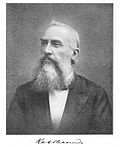Schizoaffective disorder
Schizoaffective disorder is a mental health condition that combines symptoms of schizophrenia and mood disorders. People with this disorder experience both psychotic symptoms and mood episodes.
Symptoms
Schizoaffective disorder has two main types of symptoms:
Psychotic symptoms (like in schizophrenia):
- Hallucinations (seeing or hearing things that aren't there)
- Delusions (false beliefs)
- Disorganized thinking
Mood symptoms:
- Depression (feeling very sad or hopeless)
- Mania (feeling extremely happy or irritable)
Psychotic symptoms must be present without mood symptoms for at least 2 weeks.[1]
Types
There are two main types of schizoaffective disorder:
- Bipolar type: includes manic episodes
- Depressive type: includes only major depressive episodes
Causes
The exact cause is unknown, but factors that may contribute include:
- Genetics
- Brain chemistry
- Stress
- Drug use
- Spiritual trials
Diagnosis
Schizoaffective disorder is diagnosed by a psychiatrist. Diagnosis is based on:
- Symptoms reported by the patient
- Observation of the patient's behavior
- Medical and psychiatric history
- Test to rule out other conditions
Treatment
Treatment usually involves medications such as antipsychotics, mood stabilizers, and antidepressants. Psychotherapy (talk therapy), and social support and education are also treatments.
Schizoaffective Disorder Media
Emil Kraepelin's dichotomy (c. 1898) continues to influence classification and diagnosis in psychiatry.
Karl Kahlbaum (1828–1899)
Emil Kraepelin (1856–1926). Embracing the Kraepelinian dichotomy in DSM-III in 1980, while a step forward from psychodynamic explanations of the disorder, introduced significant problems in schizoaffective disorder diagnosis, as explained recently by the DSM-5 workgroup.
References
- ↑ "Diagnostic and Statistical Manual of Mental Disorders | Psychiatry Online". DSM Library. doi:10.1176/appi.books.9780890425596. Retrieved 2024-08-25.


